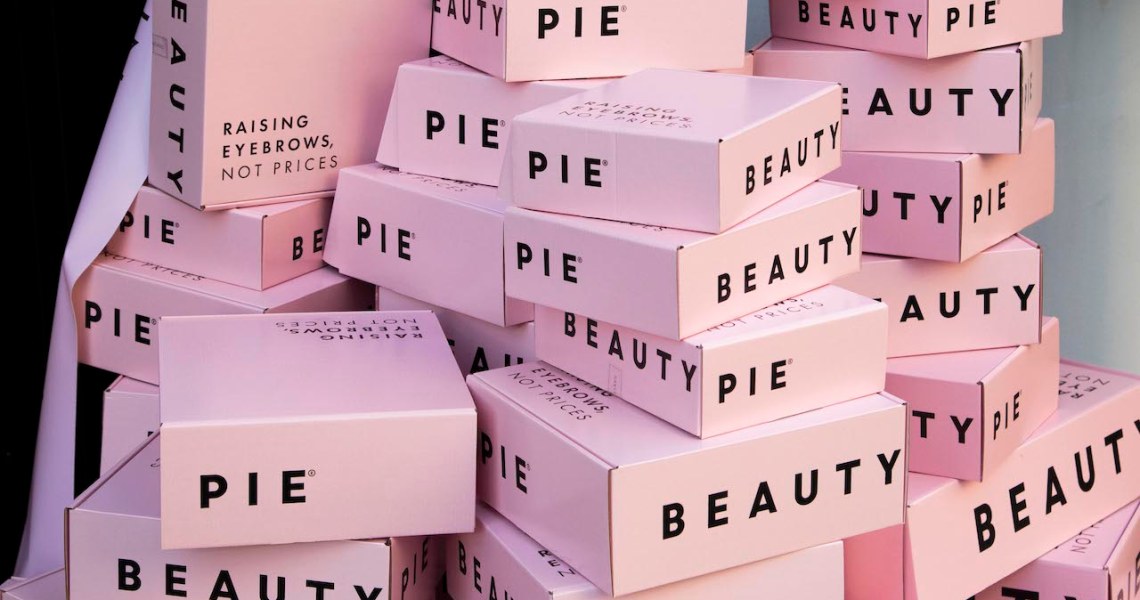Beauty Pie is updating its membership model to simplify its offerings while continuing to challenge the typical ways of operating a beauty business.
The U.K.-based DTC brand is moving away from its multi-tiered membership model that had various caps on how much its customers could buy per month (with unused spending rolled over). It now offers just two options: a $15 per month membership with a spending cap of $150 and a virtually unlimited-spend annual offering for $59 called Beauty Pie Plus (the spending cap is $3,600). It first rolled out in the U.S. in early August and will expand to the U.K. in September.
Beauty Pie has built its business on offering paid memberships to customers who can then shop the brand for high-quality, low-cost beauty products. Since its launch in 2016, it has expanded its offerings to include ancillary beauty items like candles, supplements and textiles. Products are priced between $3.72-$33.25.
Marcia Kilgore, Beauty Pie founder, said the Beauty Pie Plus option is possible because Beauty Pie’s sales and operations are larger. It no longer has inventory constraints and continues to have no retail middleman. Its supply chain is now faster than it once was, and it also has a bevy of customer data to know what people order frequently. Kilgore compared the new model to Costco, wherein an annual membership allows customers to shop as often and buy as much as they want. In the last U.K. fiscal year between April 2020 and April 2021, Beauty Pie grew revenue by more than 100%, doubled its membership base to an undisclosed number and increased its workforce to approximately 150 people, said Kilgore.
Beauty Pie’s new unlimited annual offering stems from a survey sent to 3,000 customers in the second quarter of 2021 that received 2,000 responses. Beauty Pie found that most customers did not like limits on shopping and wanted to buy more at once. In the past, Beauty Pie has also faced customer confusion over its complicated membership tiers, and as Kilgore mentioned, people can be suspicious of a business model like Beauty Pie’s because they’re used to buying items a certain way and for a certain price.
“It’s exciting being able to simplify the offers, so people coming in feel like it’s easy to understand. Previously, when we needed to have spending limits, it was less straightforward,” she said.
Indeed, Beauty Pie Plus is a case study in behavioral economics. For example, Beauty Pie sells products with retail prices that are a fraction of competitors’ prices, but it does not offer free shipping. Customers therefore often found it hard to justify spending up to $10 on shipping, even if their basket size was low, despite saving significant money on products from a cost-comparative basis to other brands, Kilgore said. Because Beauty Pie Plus is unlimited, people can now add more to their basket and justify their shipping cost.
Another psychological hurdle for Beauty Pie is the concept of inertia, where people continue as they have always done. For members who do not want to or can’t be bothered to change their membership tier, they will be grandfathered in (as the tiers will not be available to new customers). But Beauty Pie is messaging the changes both on BeautyPie.com and via email to its undisclosed number of subscribers. The central message is that Beauty Pie Plus’ unlimited annual $59 membership is a better monetary value than the previous existing tiers.
“People are suspicious when you strip out the margins,” said Kilgore. “People will pay a ridiculously inflated price for something, as long as shipping is free. We’re trying to retrain people to think ‘OK, [Beauty Pie’s business model] makes sense.'”
Over time, Beauty Pie has appeared to win over customers, as the DTC e-commerce brand rode the e-commerce boom that brands experienced in 2020 as stores were closed. According to Glossy’s previous reporting, Beauty Pie’s membership rates between March 2020 and Nov. 2020 increased by 300%. According to e-commerce tech company Edge by Ascential, the health, beauty and personal care retail category will add $305 billion in global sales from 2021-2026, with just over 50% of that growth coming from e-commerce.
“The health, beauty and personal care categories are particularly interesting to follow, with entrenched consumer habits having to change overnight as a result of the pandemic,” said Deren Baker, Edge by Ascential CEO. “To compete in a new world of retail, brands must leverage marketplace-specific shopper engagement strategies, as well as make sure they have strong fulfillment and flexible supply chain strategies to [accommodate] short lead times and meet unexpected surges in customer demand.”
Kilgore said Beauty Pie has heavily invested in adding to its technology and data teams in the last 12 months to build a custom e-commerce platform. In terms of products, the brand also branched into supplements in Nov. 2020. For the rest of 2021, Beauty Pie will focus on growing its subscriber base in the U.S., adding additional textile products around the holiday season such as cashmere, as well as product collaborations with people like U.K.-based celebrity dermatologist Dr. Andrew Markey.
“It’s not only about figuring out the best way to expose ourselves to new potential members. We also have members who are waiting for us to launch the next cool thing,” said Kilgore. “You have to continue to thrill everybody who is already a member, and for us, that is just as important.”




